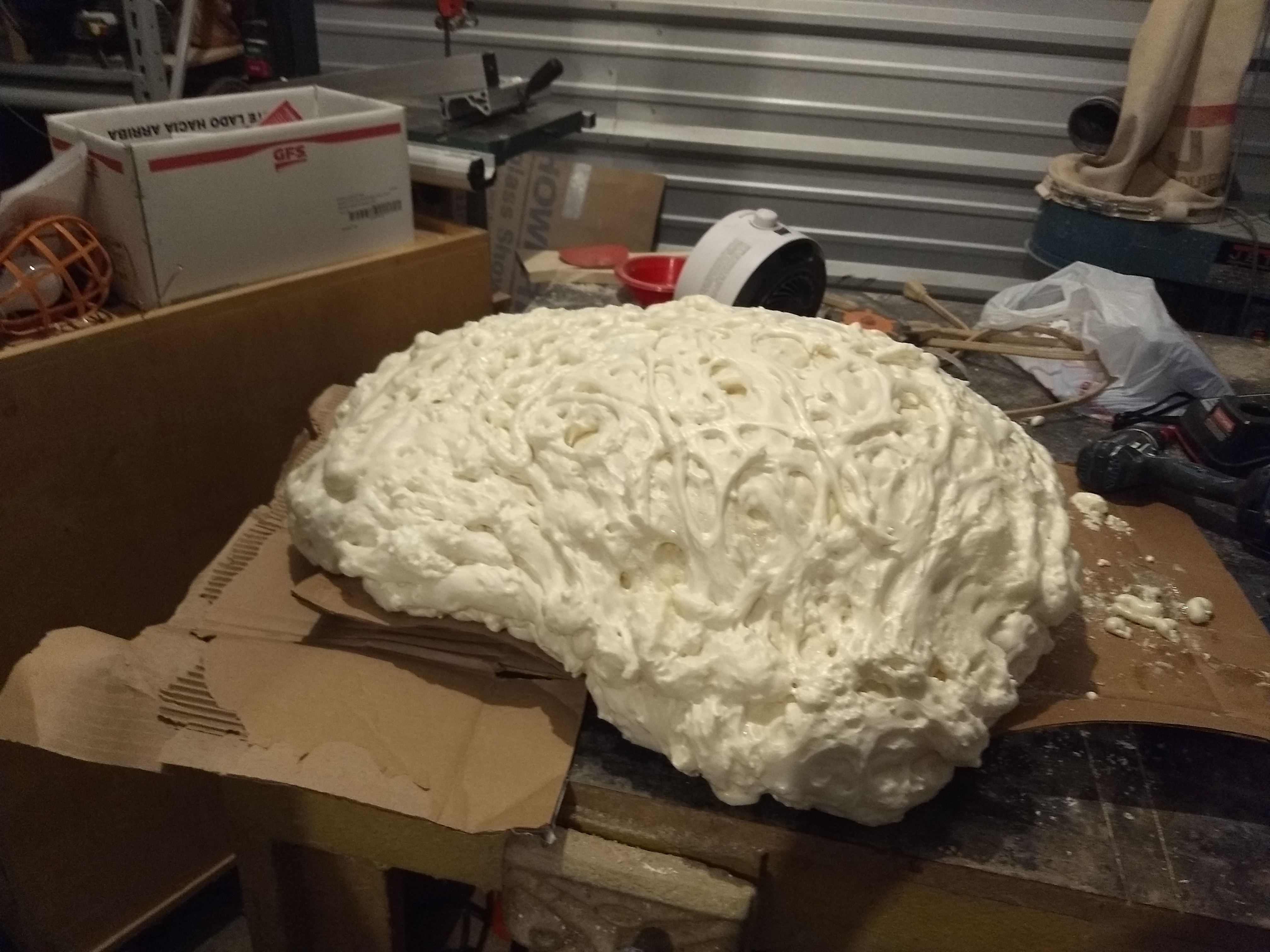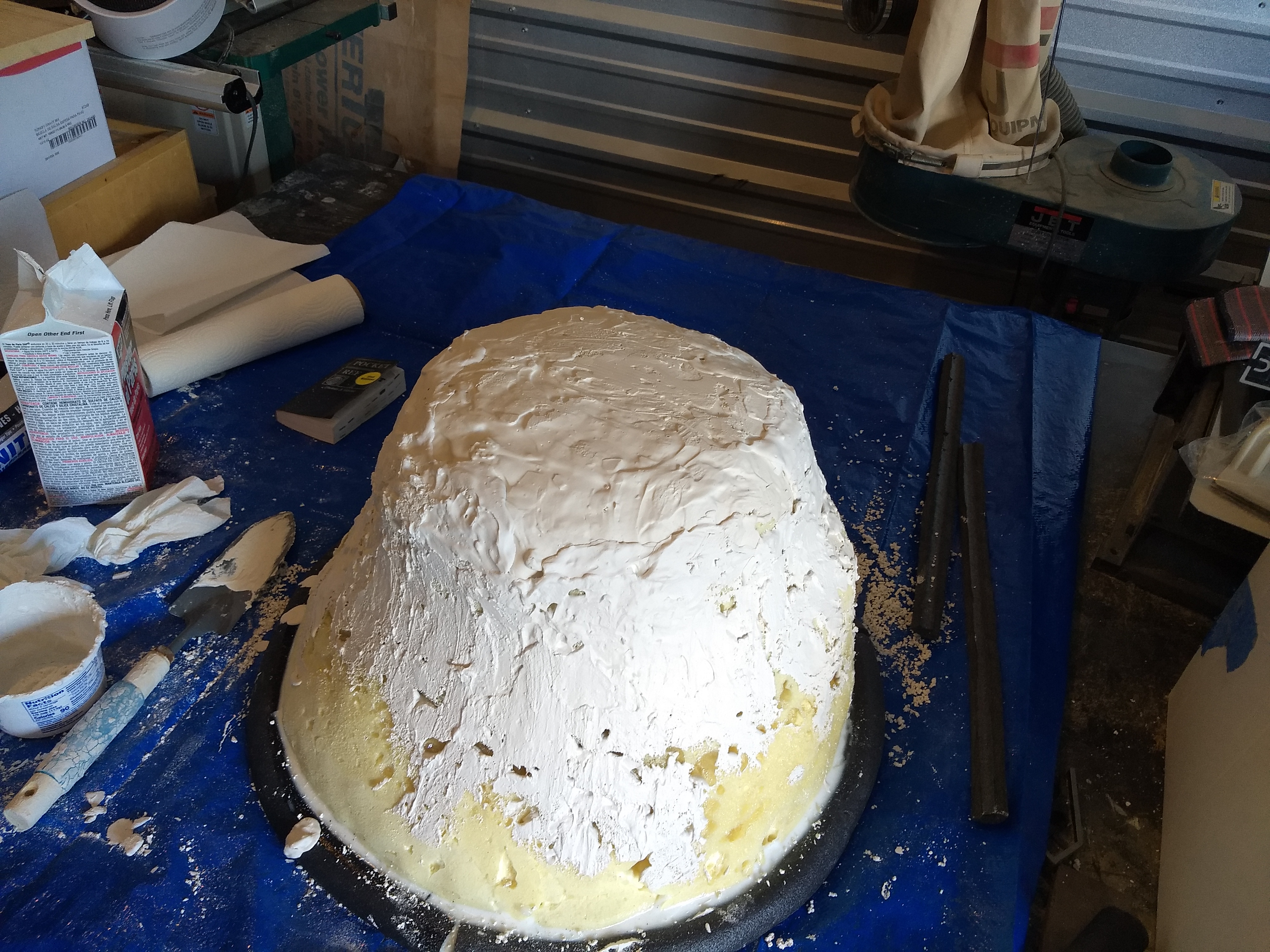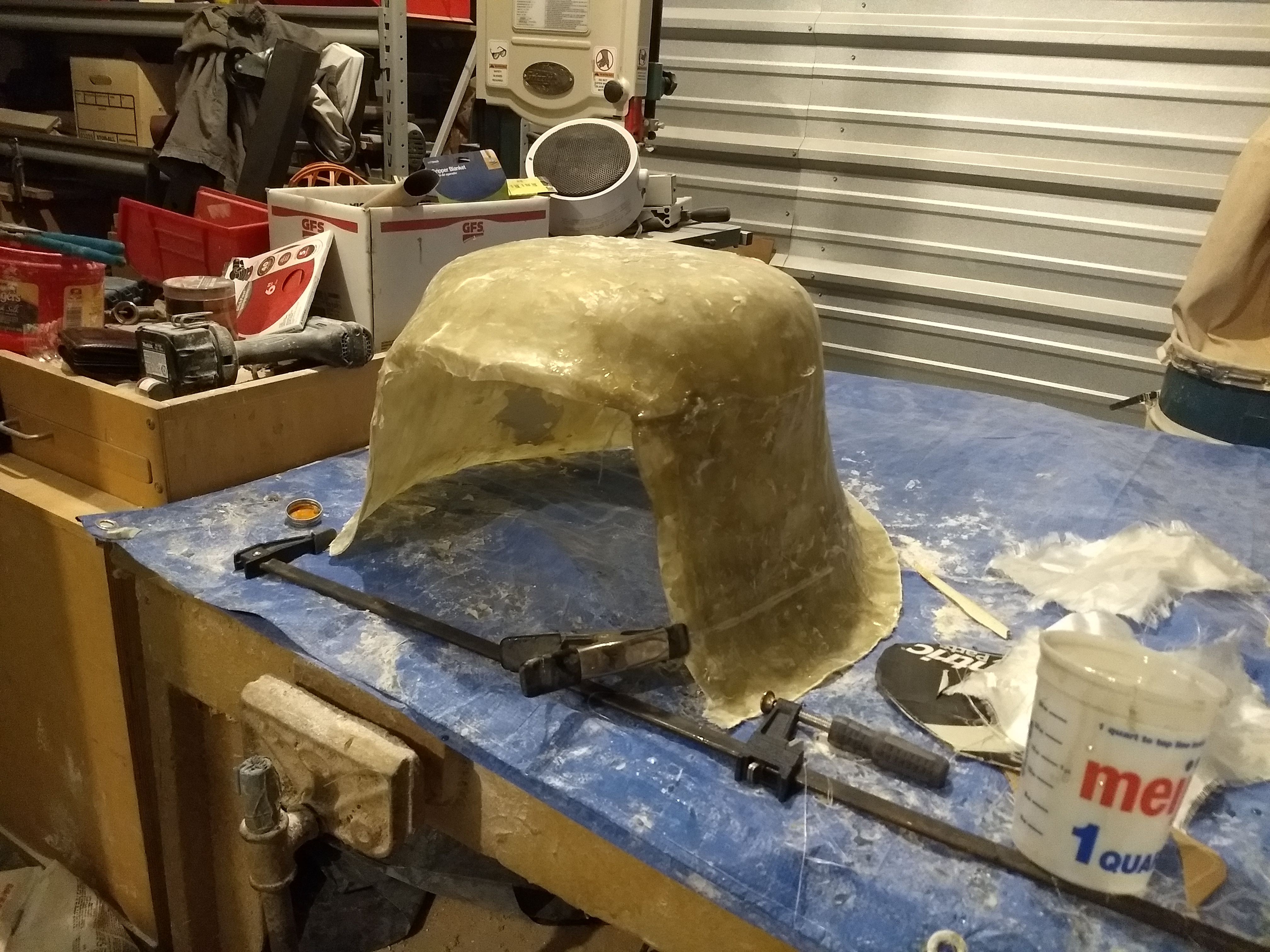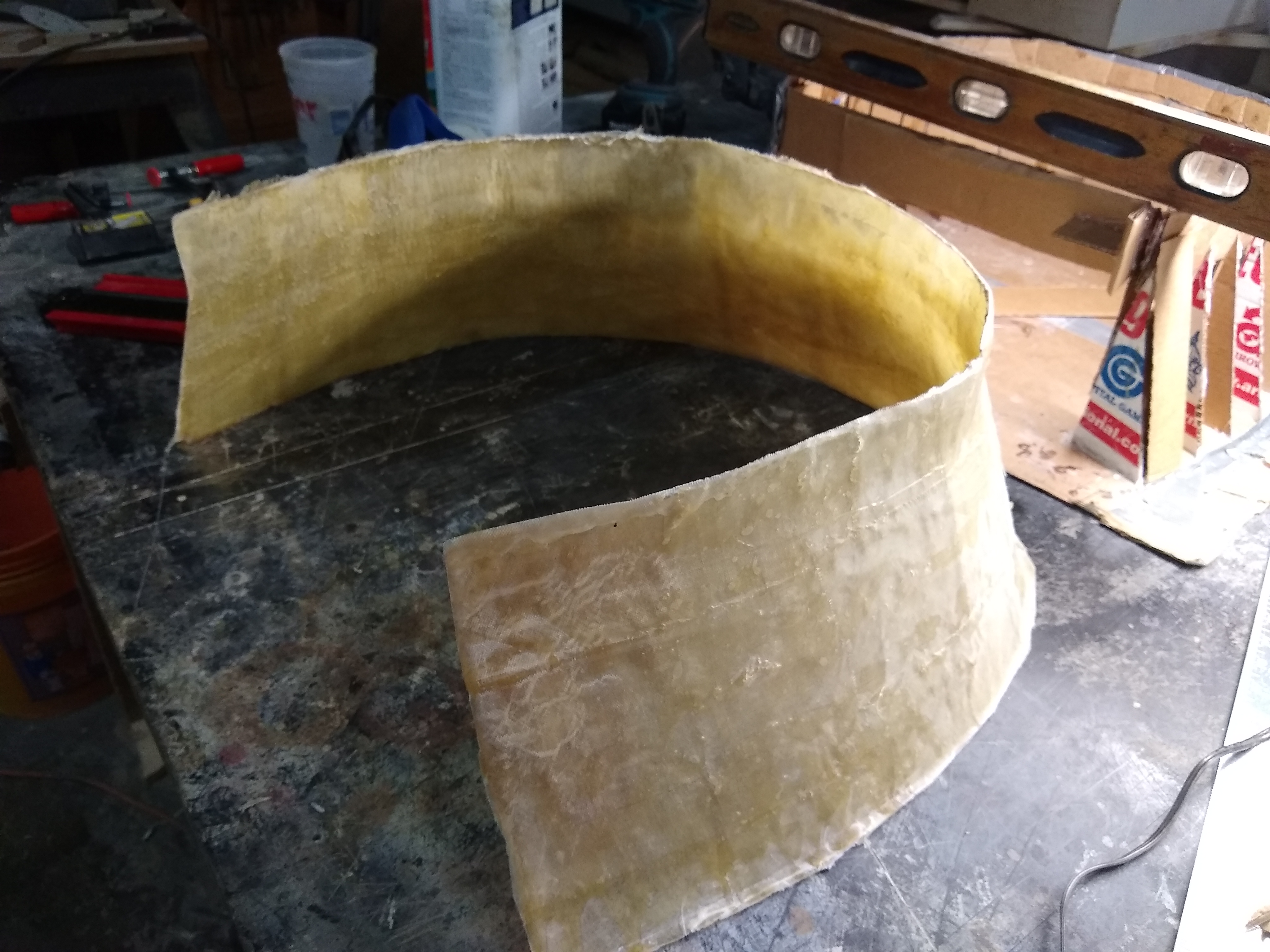So, ive been planning for a while. Watching YouTube videos. Reading articles. Reviewing previous attempts.
All ive managed to do is thoroughly confuse myself with all the contradictory information.
So, i come to the hive. I know we have many smart folks with many areas of expertise. Buzzboy built surfboards, tvrscott did aerospace composites, jmc scratch builds bodies.
Im hoping to get a thorough education of working with fiberglass. Or at least a source of consistent reliable information.
My two upcoming projects:
First, just to get reacquainted with glass is a subwoofer box for my prius. I have spare interior panels to use to form the back of it to fit where i want to. I believe they will essentially be a mold. But, being carpet/plastic, ill need to make a removable surface for them. I remember using blue tape with mized success before, so im sure theres way better options.
After the subwoofer box experience, i want to reproduce the hood from my amc in race weight fiberglass. Id actually like to make 3 or four exact copies of the current outer steel hood. I have never attempted anything like this. And there are a LOT of conflicting methods. Assuming that the hood goes well, ill do a custom cowl panel, valence, etc. Those parts are diminishing returns of weight reduction though.
Finally, id like to at least reproduce the base portion of the flares where they bolted to the fenders of the amc. These flares are made of fleece, fiberglass, and bondo. Very fragile and coming apart. Ill reshape the outside to cover the new wheel and tire package, as well as work some aero in, but want to use the same holes that are already drilled into the body.
Id like to minimum cost wherever possible, but I know some tools are just necessary. I also know some materials will be more expensive but worth it. Problem is i don't k ow what materials and tools. Last tine i used bondo brand resin, random strand mat from Amazon, and luck.
So, i guess i need a good education, starting with basic product selection up to advanced (?) Project completion.
This guy knows his stuff when it comes to fiberglass. He has some step-by-step videos on laying over wood, building molds, mixing, filling, faring, and painting. He knows his stuff.
https://www.youtube.com/c/boatworkstoday
If you're working with epoxy resin, polyethylene trash bags make a good separator material. Silicone baking mats are great as well. Cured epoxy will peel right off of both and not adhere. I'm not sure if polyester or vinylester resins will peel off those same materials, however.
Here is a quick and dirty video I did (with better links in the description) to making the flares on my Camaro.

In reply to Dusterbd13-michael :
Bill's Build & Race on youtube
he has 67 videos on fiberglass and carbon fiber on making flares/hoods/fenders to complete bodies.
He is in Australia or New Zealand so all of his vehicles are either Japanese or English.
He uses cheaper common household products as opposed to fiber specific items
So, I made this out of fiberglass:

That is, the shell of Dark Helmet, not the face mask. In fact, I made it, cut the bottom flare section off, and remade that section and fiberglassed it back together.
I did it the Wrong Way, so learn from my mistakes... My first plan was to make a plug out of expanding foam, carve it to the shape I wanted, and then use it as a mold to glass over. It takes a lot of expanding foam to make a pile that big and you get way too many voids.

So I put plaster of paris over that. I got a plug that weighed about fifty pounds, and I tried sculpting it to the shape I wanted.

That didn't work out as well as I had hoped, but I got a basic helmet.

The real problem I had was that the flare out at the bottom was extremely uneven and asymmetrical. So I went about halfway down the helmet and cut all the way around. To make the new flare, I drew out the angle that I wanted and then cut that shape out of cardboard about 30-40 times. If I would have had the Cricut at the time, I would have loaded that in and had it do all the cutting so they would have been perfectly identical. Once I had that shape, I arranged them on another bit of cardboard, secured them, and put duct tape all around it so I could use that as my plug. I got this:

Oddly, I don't seem to have any pictures of the form I built, but you can see it in the background of that picture a little.
After basically taping the two parts togther and covering all the gaps with newspaper and duct tape, I laid more glass on the inside to stitch the two parts together and then covered it in Evercoat body filler and did some sanding to get it smooth.

Once I had my form built, I would cut out strips from fiberglass mat. I used a fairly lightweight weave because my goal was to keep the weight down as much as I could. I'd stage all the strips such that I had enough to go around the form one way and then a second layer that would cross the first at about a 45 degree angle to the grain. I poured my two-part epoxy into a container, mixed it well, and then just took each strip and soaked it in the resin. When I pulled the strip out, I'd just use my fingers to squeeze out as much of the resin as I could, and then I laid it on the form. Once the first layer was down, I just used my hands to squeeze out the air bubbles and extra resin before putting the second layer on. I just got mat from either eBay or Amazon and I picked up a gallon of resin from either Meijer or Autozone or something.
So, ive been looking through all this and reviewing my previous experience.
Guess the beginner questions:
Epoxy vs polyester: seems that epoxy doesn't like most other products like gelcoat and some types of mat and such. But its more durable and solid than polyester. Which should I use?
How do you wprk the mat down flat? It kept sticking to my gloves last time, making pockets and bubbles and wrinkles?
How much resin do you add? Flood the area? Just a light coat? What am i looking for?
How do i make a mold of an existing part?
Thanks all
Dusterbd13-michael said:How do you wprk the mat down flat? It kept sticking to my gloves last time, making pockets and bubbles and wrinkles?
https://www.amazon.com/Fiberglass-Roller-Laminating-Bubble-Bathtub/dp/B07FCLTHY6/ref=asc_df_B07FCLTHY6/?tag=hyprod-20&linkCode=df0&hvadid=241914349407&hvpos=&hvnetw=g&hvrand=1684566045960419431&hvpone=&hvptwo=&hvqmt=&hvdev=c&hvdvcmdl=&hvlocint=&hvlocphy=9007919&hvtargid=pla-603064968848&psc=1
Get some rollers and dip them in acetone so they don't stick.
If strength isn't a concern, use either polyester or vinylester. Vinylester is stronger than polyester and the finished product will be closer to what you'd get with epoxy. Mat that uses a dissolving binder won't work well with epoxy, but stitched mat or other cloths will work fine. Generally if you're using a lot of mat in a build, strength isn't a primary concern anyway, as relative to the weight of the finished product, mat is pretty weak.
You can paint or gelcoat epoxy, just have to prep everything correctly first.
Ideal glass to resin ratio is about 1:1 by weight to get everything fully wetted out but minimize weight. Realistically, doing hand layup (especially without years of experience) you'll end up a bit resin heavy. It adds some weight, but otherwise it doesn't hurt anything.
For automotive mostly non-structural use, it sounds like polyester is the way to go, if the body was originally polyester. It keeps everything the same in case of future work.
What goes on next? Body filler directly to fiberglass?
Then what kind of primer on top of that - is a typical epoxy primer okay? Is gel coat needed for a car?
I've owned 3 fibreglass cars (Jensen, TVR, Jamaican MG) and can tell you that the first rule of working on fibreglass is to wear coveralls, rubber gloves and rubber bands at the wrists. You'll quickly find out why if you forget to do that!
Major reason to not use vinyl ester resin is repairability later on. Vinyl ester wont "glue" together even with it's own resin. Epoxy repairs with itself, and so does polyester. Poly is cheaper by a lot for small performance reduction if you are using glass only. If you want carbon or Kevlar you need epoxy. Hard rollers and disposable brushes are your friends. Dollar store "square" shaped food containers and craft stick stirrers. Polyvinyl alcohol release agent on top of a waxed surface is the most reliable release for polyester, and works with epoxy too.
As far as resins sticking to other resins, in general, once the resin is cured, anything you attach after is strictly a mechanical bond, not a chemical bond. Polyester sticks ok to existing polyester. Vinylester or epoxy sticks better. Epoxy will form the strongest mechanical bond to any of the 3 resins, but if you want to get a good bond to already cured epoxy, you have to use more epoxy. I've never heard of (or seen) any issue getting a mechanical bond to vinylester using vinylester or epoxy as the new resin.
Gimp (Forum Supporter) said:Dusterbd13-michael said:How do you wprk the mat down flat? It kept sticking to my gloves last time, making pockets and bubbles and wrinkles?
https://www.amazon.com/Fiberglass-Roller-Laminating-Bubble-Bathtub/dp/B07FCLTHY6/ref=asc_df_B07FCLTHY6/?tag=hyprod-20&linkCode=df0&hvadid=241914349407&hvpos=&hvnetw=g&hvrand=1684566045960419431&hvpone=&hvptwo=&hvqmt=&hvdev=c&hvdvcmdl=&hvlocint=&hvlocphy=9007919&hvtargid=pla-603064968848&psc=1
Get some rollers and dip them in acetone so they don't stick.
Awesome. Ordered! Thanks!
Does acetone work on gloves for nonstick as well? Also, does it do anything funny to the resin, or just cure out no problem?
In reply to rslifkin :
When you talk about strength, what do you mean? In terms of say a hood, i figure strength means shape retention. Which would be a factor of three dimensional design in addition to the material, right? Like adding reinforcement strips underneath.
Am i missing the mark? Care to educate me more about the strength property?
Dusterbd13-michael said:In reply to rslifkin :
When you talk about strength, what do you mean? In terms of say a hood, i figure strength means shape retention. Which would be a factor of three dimensional design in addition to the material, right? Like adding reinforcement strips underneath.
Am i missing the mark? Care to educate me more about the strength property?
Early Porsche 911 race cars had fiberglass front hoods with strips of balsa wood to help keep the shape , lots of pictures on the web.
Dusterbd13-michael said:In reply to rslifkin :
When you talk about strength, what do you mean? In terms of say a hood, i figure strength means shape retention. Which would be a factor of three dimensional design in addition to the material, right? Like adding reinforcement strips underneath.
Am i missing the mark? Care to educate me more about the strength property?
Strength and stiffness don't necessarily go hand in hand. Fiberglass is generally a strong, but flexible material. So if I built a big, flat panel and made it just strong enough that I could walk on it without breaking it, it would feel pretty springy under my feet due to flex. So you'd either have to over-build it or add support underneath or add core material to add stiffness until it won't flex more than desired. Various techniques to get that extra stiffness will lead to different weights. And differing puncture resistance as well (you can have cases of really light, stiff cored structures with very thin fiberglass skins depending on the required strength, so then it can become easy to puncture the outer skin). Any of those factors can drive the minimum glass thickness you have to build to.
The shape will definitely be a factor in how much fiberglass it takes to get adequate strength and stiffness from the part.
When I'm talking about bonding strength for repairs or add-ons to an existing, already cured part, it's a question of how much it would take for that bond to fail. Depending on the situation and technique used to create the joint, that may be a concern, or it may be "even the weakest of the material choices is still more than enough".
In reply to rslifkin :
Thanks!! That makes a LOT of sense now. I appreciate the time you are taking!
When I built my Miata fastback, it had large expanses that needed support. To keep it light, I avoided building it thick. Instead, I added structural ribs.
They were really easy. I used rubber hose wherever I wanted a rib, and glassed over it.
In reply to SV reX :
I hadn't thought of hose. I had thought of foam house insulation or poker table foam, but not hose. Genius!
maschinenbau said:For automotive mostly non-structural use, it sounds like polyester is the way to go, if the body was originally polyester. It keeps everything the same in case of future work.
What goes on next? Body filler directly to fiberglass?
Then what kind of primer on top of that - is a typical epoxy primer okay? Is gel coat needed for a car?
Bumping my questions
In reply to maschinenbau :
That Classic Motorsports article on fiberglass repairs talks about filler and gel coat, so hopefully it helps.
You'll need to log in to post.